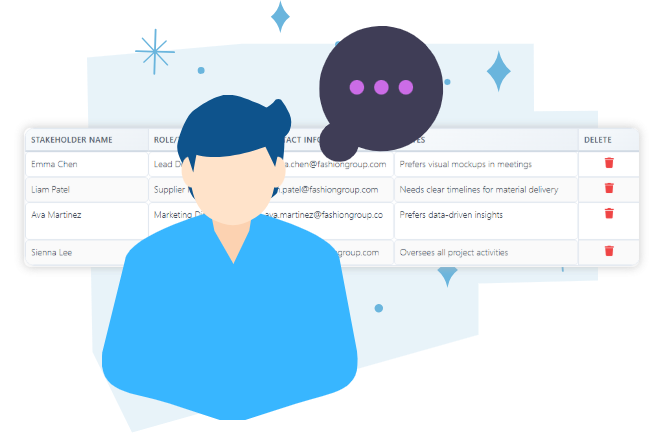Now Reading: How to Build a Stakeholder Register That Works | Stakeholder Management Tool
-
01
How to Build a Stakeholder Register That Works | Stakeholder Management Tool
How to Build a Stakeholder Register That Works | Stakeholder Management Tool
What is a Stakeholder Register?

Inside the tool, the stakeholder register is part of Step 2: Stakeholder Identification. It is a table where you can add all project stakeholders, whether internal team members or external parties. Each entry captures:
- Name of the stakeholder
- Role or title in relation to the project
- Contact details for communication
- Notes about expectations, priorities, or special considerations
This register becomes the foundation for later steps like analysis, engagement planning, and report generation.
Why It Matters?
Without a structured register, projects risk overlooking key voices or losing important contact details. By centralizing this information in the tool, you ensure:
- No stakeholder is forgotten
- Communication is consistent and traceable
- A shared reference is always available for the project team
How to Build the Register in the Tool
01 | Click “Add Another Stakeholder
“Use the button to insert new rows.
02 | Fill in Stakeholder Details
Enter name, role, and contact information directly into the table.
03 | Add Notes
Capture expectations, concerns, or relevant context for future steps.
04 | Edit or Remove Anytime
Each row is editable, and the delete button makes it simple to update your register as the project evolves.
Benefits of Using the Tool
- Centralized Data: All stakeholder details are stored in one place.
- Integrated Workflow: Information flows directly into later steps like the Power–Interest Grid and Communication Plan.
- Report Ready: When you generate the final report, the register is automatically formatted into a professional stakeholder table.
Practical Uses of the Stakeholder Register
Kickoff Workshops
During project initiation, the register can be built collaboratively with your team. This ensures that everyone agrees on who the key stakeholders are and what their roles should be. By doing this inside the tool, you establish a shared source of truth from day one
Ongoing Updates
Projects evolve, and so do stakeholders. New members may join, others may step back, or roles may shift. The tool makes it easy to add, edit, or remove entries, keeping the register current and preventing outdated information from causing confusion later.
Transparency
The register is not just for the project manager — it can be shared in team meetings or stakeholder sessions. Having this clear, centralized list builds trust, avoids assumptions, and ensures everyone knows exactly who is involved and how to reach them.

